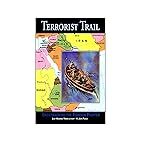Amazon Purchase Link: Prepper's Guide
Aden is a friend of mine, but he didn't ask me to review this and doesn't even know I'm doing it. I'm sneaky like that.
I started this book long ago, but my travel schedule and move put reading on the back burner. However, the communications issues we faced in the aftermath of back to back hurricanes had me thinking I'd better break this out and get to work.
The cool thing is that Aden, also known as the King of the South (just ask him), has a really fun writing style and is easy to read. Once I got into the meat of the book, I couldn't stop reading it. His hand-drawn cartoons are better than mine (shocking, I know) and actually make the book more fun.
Aden discusses practical, real-world use of radio in all it's forms in a post-disaster or Without Rule of Law environment. He breaks down the physics of radio and explains in simple terms all of the various types of radios. For example, he discusses software-defined radio (SDR), digital vs analog, HF radio, VHF/UHF radio and all of their uses. He discusses how to incorporate directional antennas, spectrum analyzers, and scanners into your intelligence collection plan.
Aden uses several real-world examples to illustrate his point. One of the best chapters is on how to use radios to provide early warning for an underground church meeting. He delves into recon and intelligence skills to supplement your radios.
He includes a series of training exercises and thought questions designed to help you think about your radio and communications plans. The appendix contains a list of frequencies to monitor during emergencies.
The true indicator of how smart a man is is how much agrees with you. In this book, Aden recommends taking NC Scout's RTO course several itmes, as well as recommending his book. Since I feel the same way, Aden is clearly a genius.
I highly recommend this book.


















